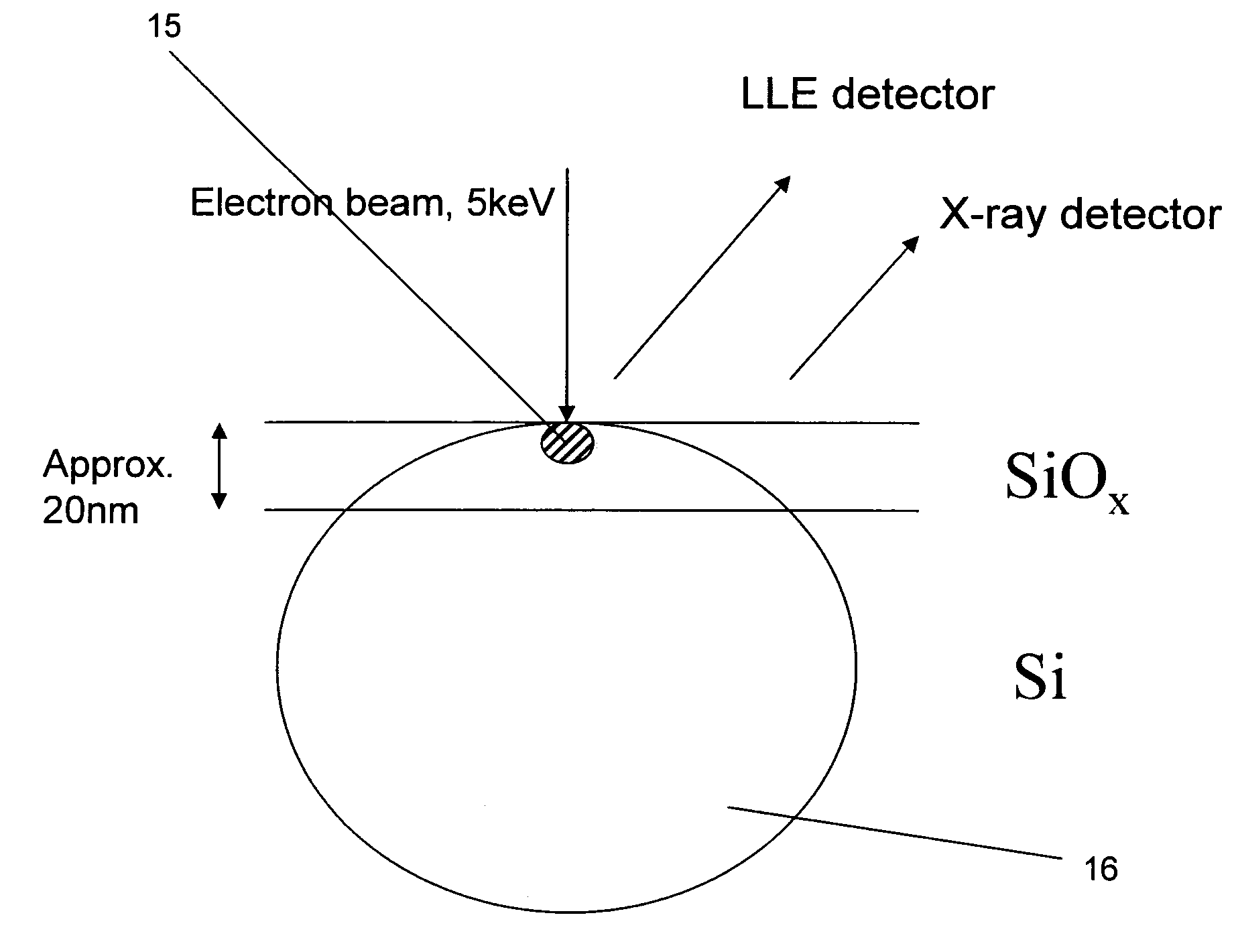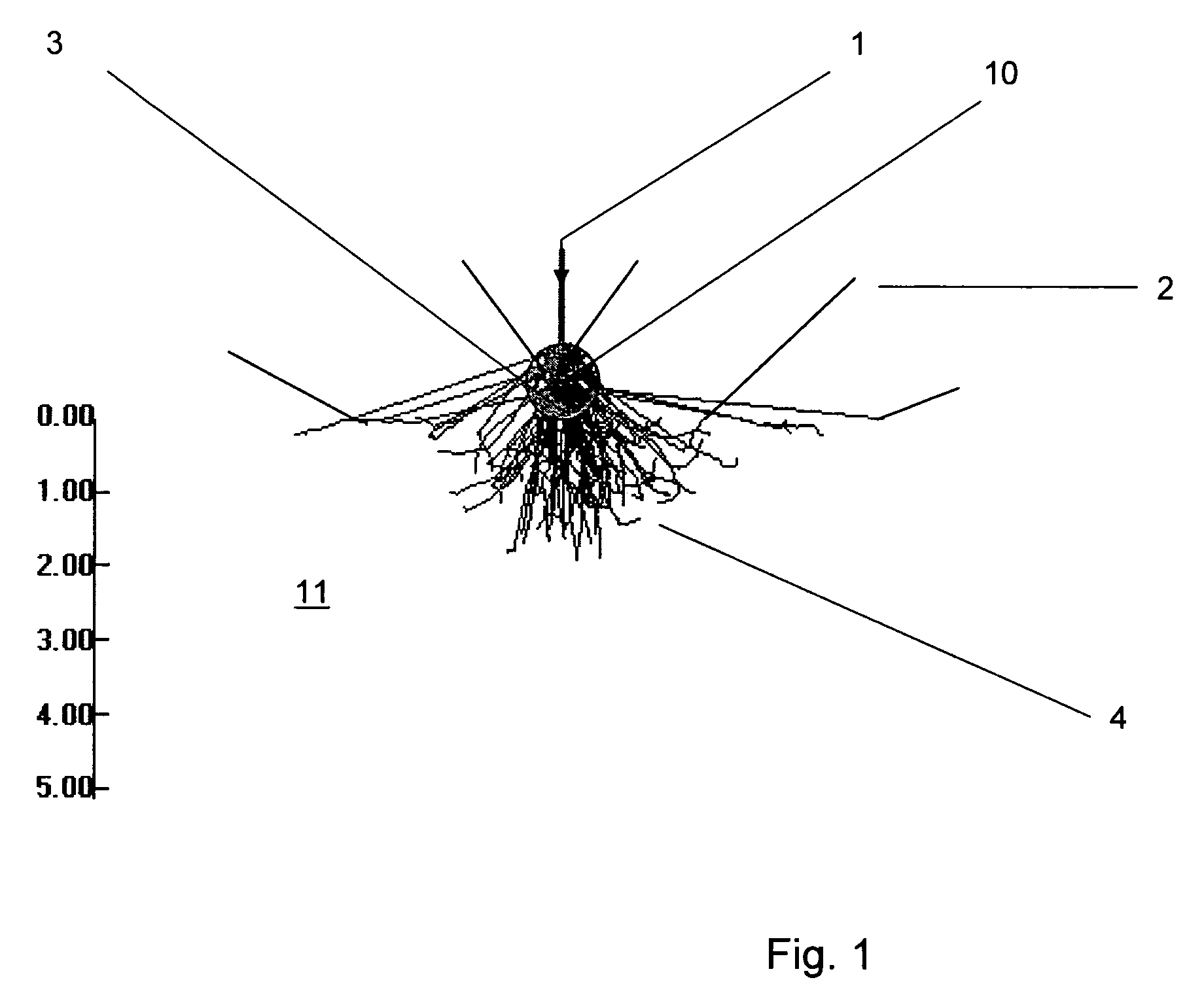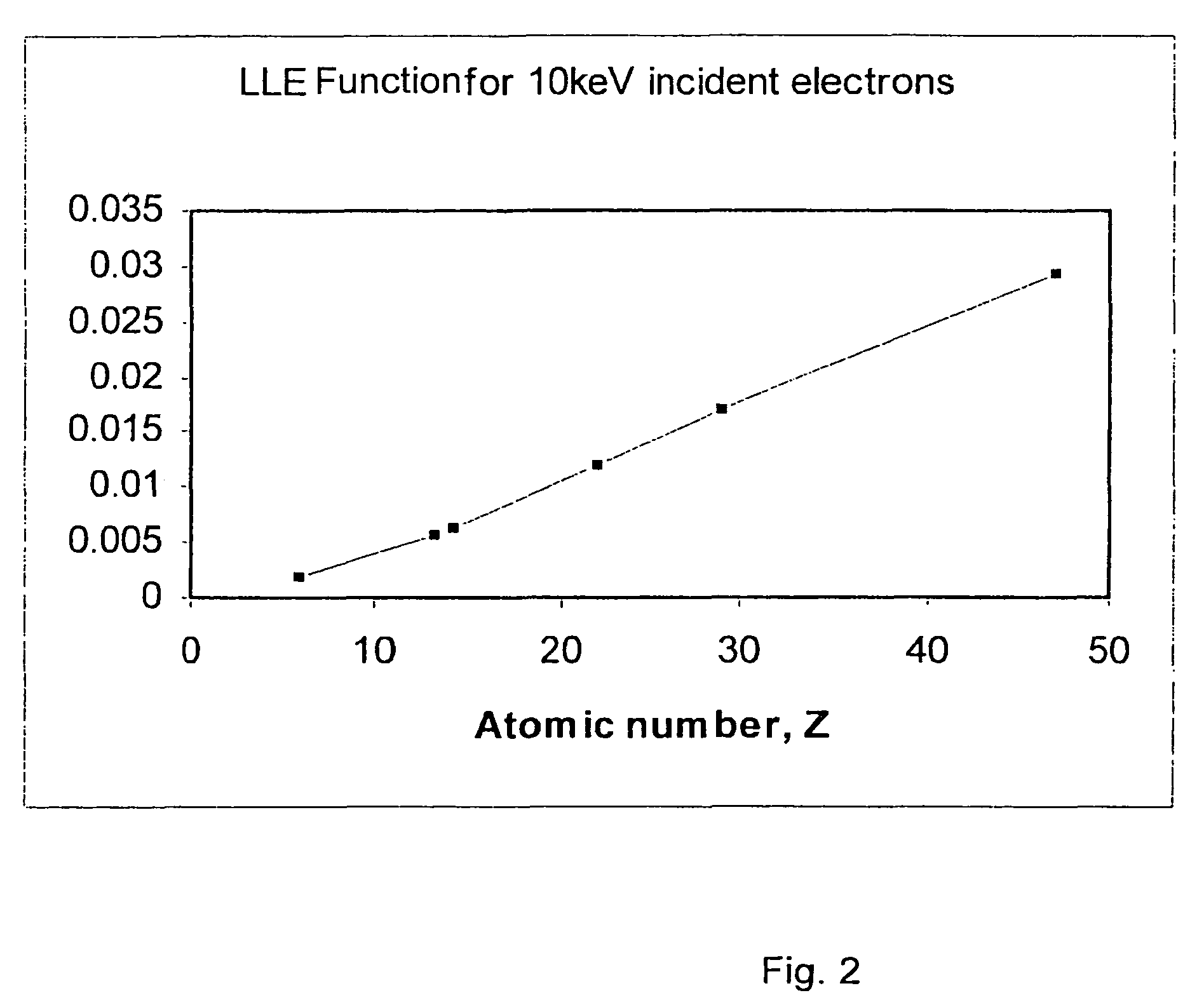Method for quantitative analysis of a material
a quantitative analysis and material technology, applied in the field of quantitative analysis of materials, can solve the problems of x-ray spectrum not being able to correct for feature size, method based on backscattered electrons described by u.s. pat. no. 4,559,450, and energy electron scattering within the specimen and affecting the quality of material, so as to achieve a fast and yet simple method
- Summary
- Abstract
- Description
- Claims
- Application Information
AI Technical Summary
Benefits of technology
Problems solved by technology
Method used
Image
Examples
example 1
[0063]This first example describes a method of combining LLE and x-ray data to identify the material of an object that is smaller than the x-ray excitation volume (the second region). FIGS. 4a, 4b and 4c show a cross section through a specimen to illustrate electron trajectories that produce the LLE and x-ray signals. The smaller the electron energy loss, the smaller the information volume for the LLE signal (the first region). For example, for an energy loss of 100 eV or less, the information volume is typically of the order of 10 nm across. If there is a small object embedded in the surface and bigger than 10 nm across, the LLE signal would be representative of the material constituting this small object. This is shown in FIG. 4a where it should be noted that the focussed electron beam diameter is less than 10 nm. However, x-rays are emitted all along the electron trajectories (within the second region) so the x-ray spectrum is representative of material from both the small object...
example 2
[0074]This second example describes the use of the invention in combination with a raster scan. If the incident beam is scanned over a raster covering a field of view, the LLE signal can be measured at each point in the raster and converted to an effective Z value. If this effective Z is plotted as a function of beam position, this will provide an image of the material in the field of view showing high resolution material contrast. If the same field of view is scanned while measuring the x-ray spectrum at each point, lower spatial resolution analytical information is obtained. U.S. Pat. No. 5,357,110 describes a method of combining the lower spatial resolution x-ray analytical information with an auxiliary signal such as a backscattered electron signal, to provide a composite image that shows analytical information of element content at the higher spatial resolution of the auxiliary signal.
[0075]We have realised that the same method can be used to combine the very high spatial resol...
example 3
[0076]This third example explains the use of the invention to obtain information upon layered structures.
[0077]In this case the specimen consists of a number of layers of unknown composition and thickness. A vertical section can be prepared by focussed ion beam etching (FIB) in an SEM. The etched surface is presented normal to the incident electron beam (a 10 keV beam in this case). FIG. 6 shows a cross section illustrating the electron trajectories through such a specimen. In FIG. 6 the actual compositions of and thicknesses of the layers are shown, these being nickel (100 nm), aluminium (200 nm) and gold (50 nm), these all being sandwiched by a thick layer of silicon upon either side of the three layers.
[0078]When the focussed incident beam is within the Au layer, the LLE signal is generated by a small volume less than the layer thickness and is therefore representative of Au alone. However, the 10 keV incident electrons scatter within the specimen and excite x-rays from the neigh...
PUM
| Property | Measurement | Unit |
|---|---|---|
| energy | aaaaa | aaaaa |
| energy | aaaaa | aaaaa |
| depth | aaaaa | aaaaa |
Abstract
Description
Claims
Application Information
 Login to View More
Login to View More - R&D
- Intellectual Property
- Life Sciences
- Materials
- Tech Scout
- Unparalleled Data Quality
- Higher Quality Content
- 60% Fewer Hallucinations
Browse by: Latest US Patents, China's latest patents, Technical Efficacy Thesaurus, Application Domain, Technology Topic, Popular Technical Reports.
© 2025 PatSnap. All rights reserved.Legal|Privacy policy|Modern Slavery Act Transparency Statement|Sitemap|About US| Contact US: help@patsnap.com



